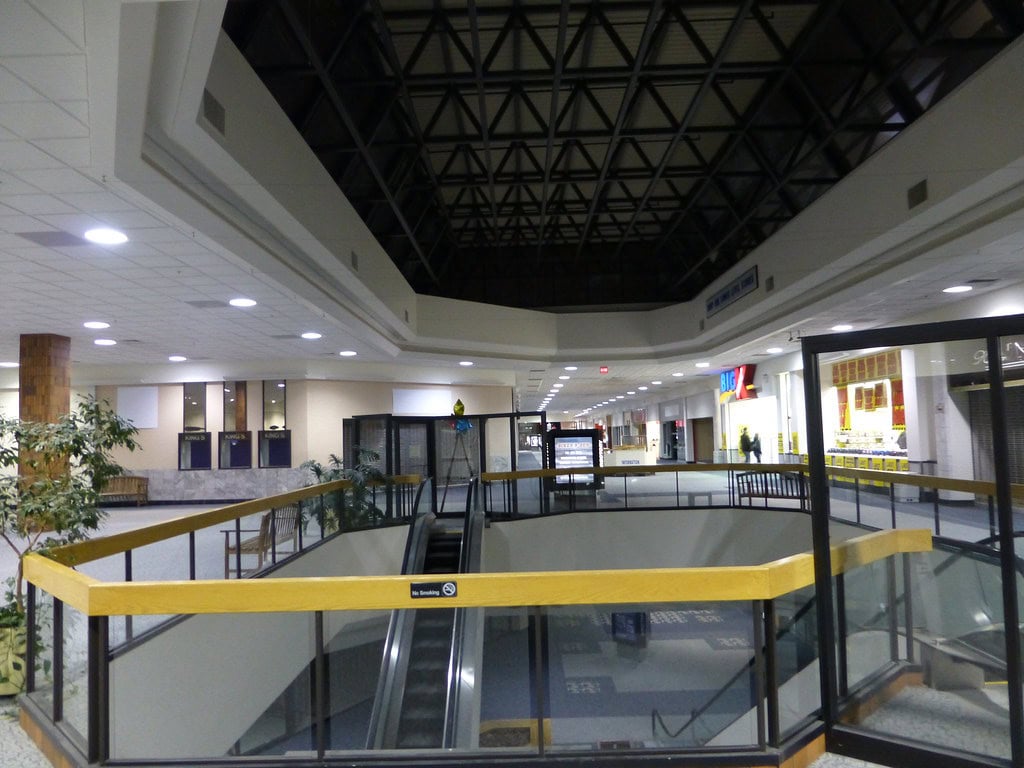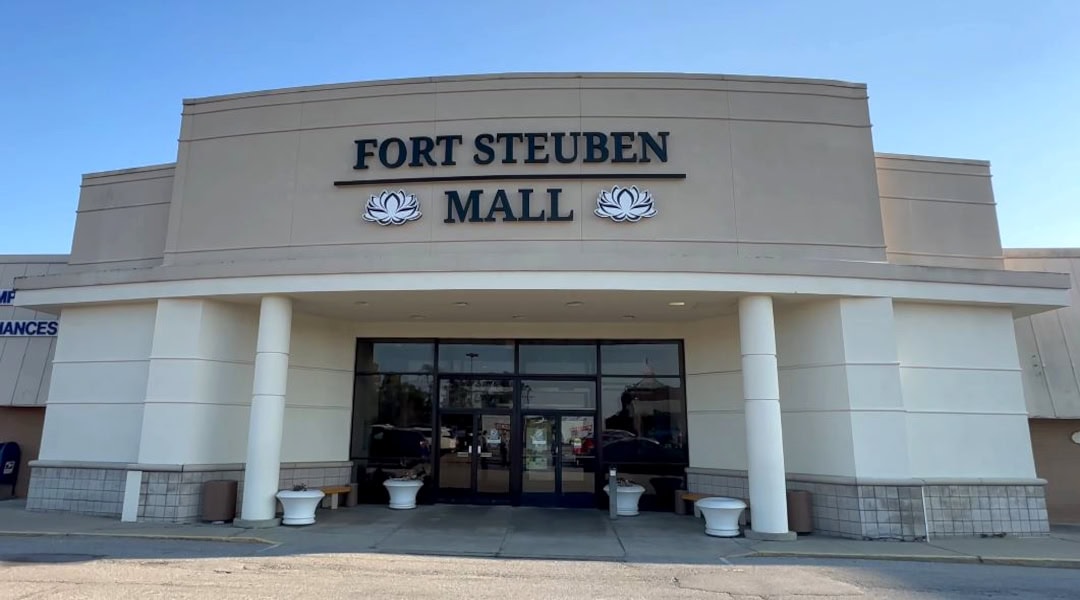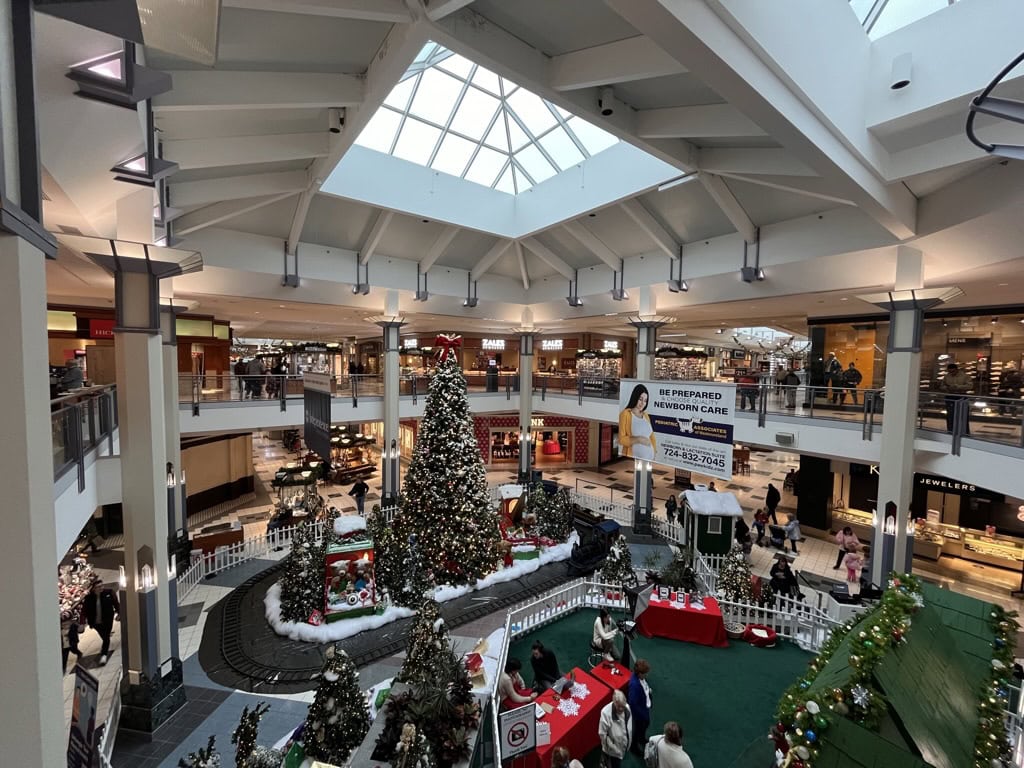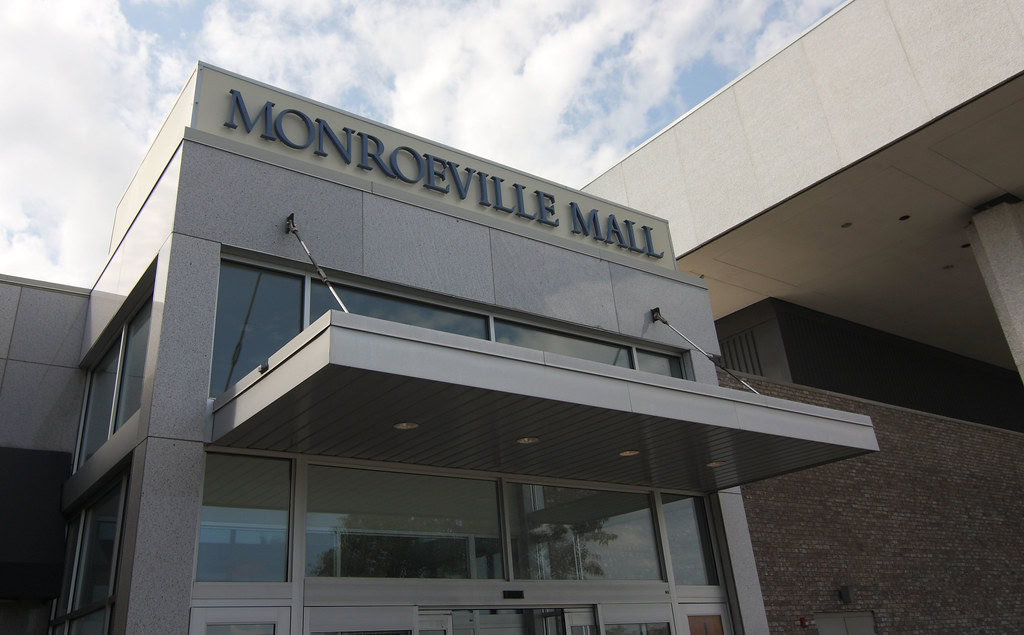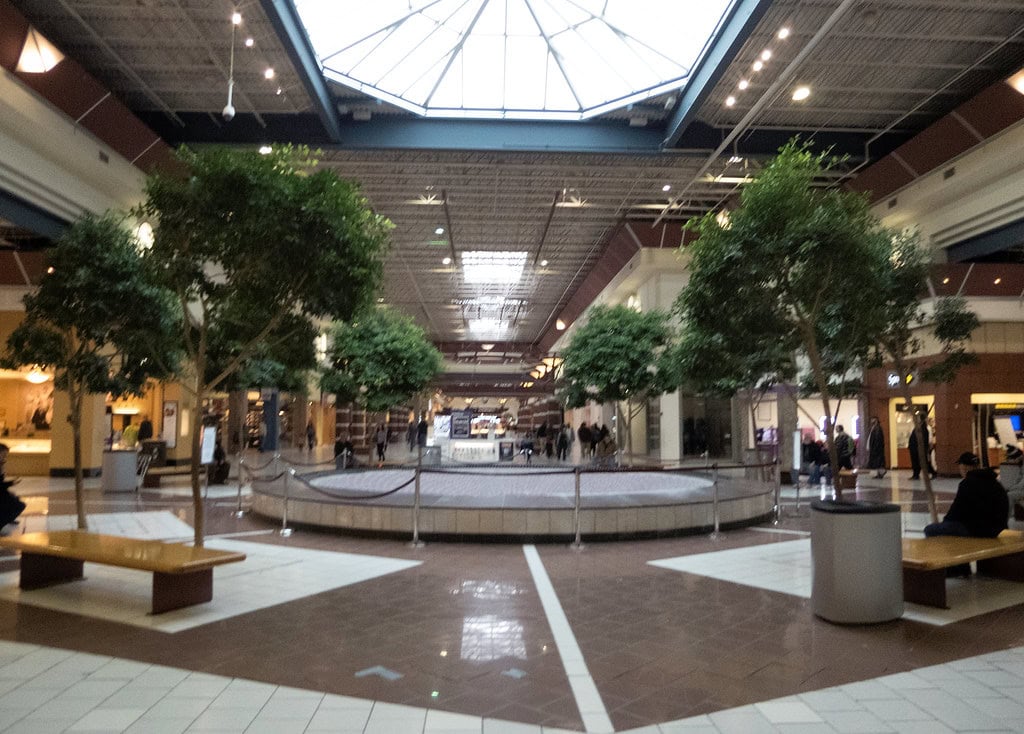Fort Steuben Mall: Origins and Vision
Steubenville once built its future where soldiers once built their fort, both chasing security in uncertain times.
Developers in the 1970s believed prosperity could rise again from Ohio River soil through glass and concrete. They called it Fort Steuben Mall, a name that tied the dream to the ground that first defined it.
The idea belonged to the Goodman Company of Allentown, Pennsylvania, a developer that specialized in the booming world of enclosed shopping centers.
By 1970, they had scrapped an earlier plan for a Hilton Motor Lodge and begun drawing up blueprints for a mall instead.
The location made sense: a high terrace overlooking the Ohio River, close to the town's heart and steeped in the history of the old military post built in 1786.
Construction began in 1972. Two years later, on March 5, 1974, the Fort Steuben Mall opened to the public.
It wasn't just another mall; it was Steubenville's modern cathedral, a controlled climate for optimism when the local steel industry had already begun to cool.
The Great Opening
Opening day was a small-town spectacle with big-city polish.
Two anchors, Kaufmann's and Sears, framed the new building like royal gates.
Kaufmann's, a 132,000-square-foot marvel of marble floors and mirrored columns, was the chain's first store outside Pennsylvania, and the first ever inside a mall.
It took 300 employees to run it, and locals spoke of the chandeliers the way others spoke of ballrooms.
Sears brought the tools of modern life and a futuristic twist: a dedicated computer room that tracked every sale and sent data to a master system in Washington, D.C. It was 1974, and Steubenville had entered the computer age one cash register at a time.
By 1975, demand was so strong that the mall expanded to add a third anchor, Carlisle's, and 25 more shops.
It was filled with life fast: teenagers, retirees, and steelworkers' families, all wandering beneath skylights reflected in polished tile.

Design, Detail, and Community
Fort Steuben Mall had character. It wasn't sterile or corporate.
Light fell through skylights onto two fountains that people still talk about.
One shot ten feet high in the center court; the other, smaller, glowed blue and orange near Sears.
The fountains weren't just for show. Management bragged that they kept the air clean and humid.
The mall felt like a miniature city.
Kinney Shoes, Fashion Bug, Thom McAn, County Seat, and Baskin-Robbins lined the walkways.
M & M Bank ran a small branch inside, the only one of its kind around.
Rodgers Jewelers moved in from downtown, Hickory Farms sold smoked meats under wood-beam décor, and everything smelled like pretzels and new carpet.
A small cinema opened soon after. Three screens at first, six by the 1990s.
Its lights gave the mall an after-dark pulse through winter snow and heavy summer air.
When general manager Robert Morgano made his morning rounds, he heard the splash of fountains and the echo of kids' laughter.
The mall wasn't just where people shopped. It was where Steubenville gathered.
The Golden Era
In the 1980s, the mall was busy all the time. The parking lot was full, and traffic was slow on Mall Drive.
Kids spent their quarters at Aladdin's Castle.
Families ate at York Steak House or Elby's Big Boy.
The High Hat Café knew the regulars by name. The air smelled like popcorn and perfume.
Playland and Circus World were packed with toys. Later, Kay Bee took over one of them, but it felt the same.
At Christmas, the fountain became a stage and choirs sang there.
People stopped to watch even if they weren't buying anything.
JCPenney opened in 1983, where Carlisle's had been. That gave the mall four big stores.
By the end of the decade, there was a food court with Sbarro, A&W, and a gyro stand.
The food didn't matter much. People just liked being there.
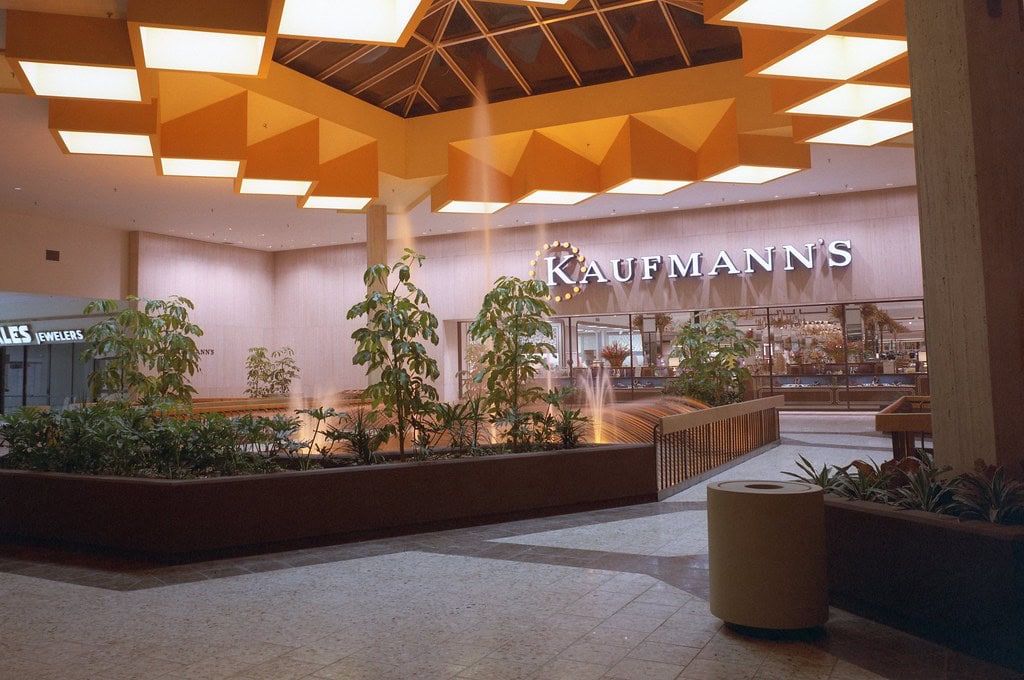
Cracks and Shifts
The 1990s started quietly, but things were already changing. The mall didn't feel new anymore.
A section of the floor began to sink, and the stores had to move.
The fountains stopped running and were covered up. The sound of water was gone, and people noticed.
One by one, stores left. Der Dog Haus closed. Baskin-Robbins closed.
Woolworth's hung on for a while, then shut its doors too.
The food court emptied out and was turned into an arcade.
Rite Aid and National City Bank moved out to their own buildings, easier to reach from the street.
By the middle of the decade, the mall felt different.
A few new places opened: Family Toy Warehouse, Cato Fashions, and Pet Supplies Plus, but they didn't last.
Chi-Chi's opened in 1994 and brought some life back for a while, but it closed in 2003 when the chain went under.
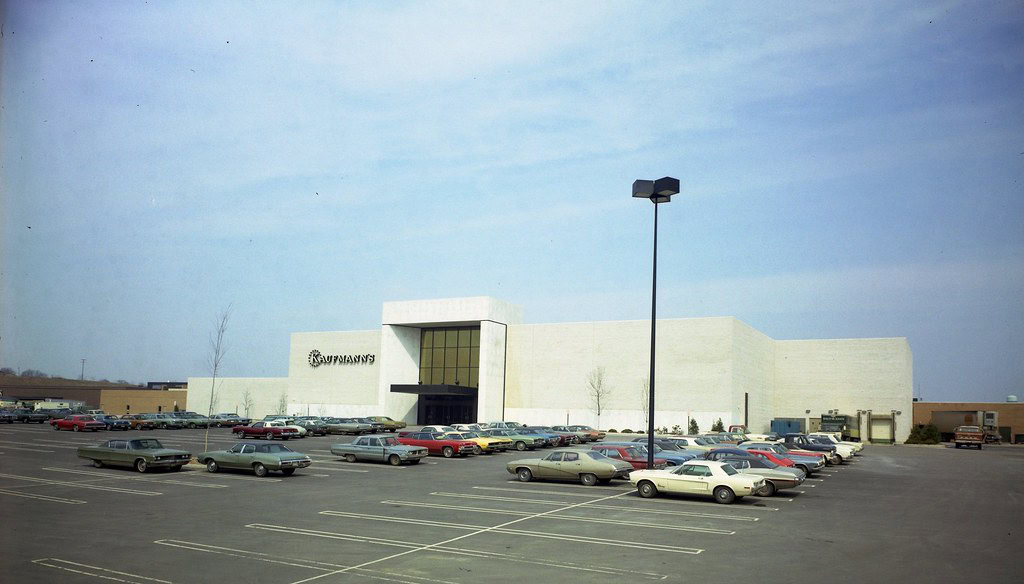
Rebuilding Hope
The turn of the millennium brought another attempt to save it.
In 2000, the mall's owners launched a full-scale renovation.
Sears moved into a newly built two-story anchor on the north side, while JCPenney relocated to the old Sears footprint.
The original JCPenney building was demolished to make space for a Walmart Supercenter that opened in 2002.
The facelift was dramatic, with new carpeting, bright white walls, and a simplified layout, but much of the mall's character vanished with the fountains and tile floors.
The renovations brought temporary curiosity but little lasting energy.
In 2006, Kaufmann's was renamed Macy's, closing the chapter on the department store that had helped define the mall from its first day.
The Hollowing Years
The 2000s were full of arrivals that didn't last.
PacSun, Steve & Barry's, and Christopher & Banks came and went.
Waldenbooks, one of the mall's most cherished spaces, shut its doors around 2009.
The anchor losses that followed hit like dominoes. Sears closed in 2016 after 42 years, leaving a dark two-story hole.
Macy's followed in 2017, eliminating another 59 jobs.
Only JCPenney stayed, its endurance more habit than hope.
With the anchors gone, the smaller stores couldn't survive. RadioShack, Sam Goody, Spencer's, all gone.
Even the movie theater closed in 2020.
The Ownership Carousel
Then came the era of new owners, each promising rebirth.
In December 2018, Kohan Retail Investment Group, a New York company known for buying distressed malls, purchased Fort Steuben Mall for $10.75 million.
They patched roofs and talked about turning it into a community space, but by 2021, only about 20 percent of the building was occupied.
The former Macy's building had already been sold separately to Lionheart Capital for $530,000.
Local entrepreneur group Ferguson later bought the former Sears building with big plans: go-karts, bumper cars, and a sprawling family fun center.
COVID-19 stalled that dream, and it has yet to reopen.
In February 2022, the mall changed hands again, this time to Brookwood Capital Partners of Nashville.
They made quick repairs, added several local tenants, and within three months, put it back up for auction.
Flamengos Investments of North Carolina won the bid for $11.6 million.
Within weeks, they sued Brookwood for fraud, claiming the property's finances and tenant lists had been falsified.
Brookwood denied it, arguing the sale was "as is." The fight dragged into 2023, while the building continued to crumble.

Collapse and Consequence
By August 2023, Flamengos was desperate enough to reauction the mall, starting bids at just $2.4 million, a fraction of what they'd paid.
The following year, their lender, Total Finance of Mississippi, foreclosed on the property.
In April 2025, a Jefferson County judge approved the foreclosure.
The unpaid balance had ballooned to more than $8 million.
Parts of the complex remained independent: the 7 Ranges entertainment space (former Sears) and the old Macy's parcel, which sold in May 2025 for $460,000.
Cubeworks, the previous owner, had floated eccentric ideas: roller rink, storage facility, even "glamping", but none took hold.
Inside the main structure, the echoes persisted. The Ville operated where the High Hat Café had served for decades.
There was a Chinese buffet, a cookie stand, and a few offices.
The Social Security office and military recruiters occupied the spaces that once sold records and jewelry.
7 Ranges Entertainment took over the old Sears space. The Ferguson family built it after delays and opened it in early 2024.
It has bowling, mini golf, axe-throwing, and a big arcade. There's a bar and grill called the G.O.A.T. House.
On weekends, people come back. Kids play games. Music and noise fill the halls again. For a while, the mall feels alive.
What Remains
Today, Fort Steuben Mall is both a monument and a metaphor.
It covers 823,000 square feet of worn history: a mostly one-story building whose parking lot is cracked and whose roof leaks in the rain.
The air is heavy with the scent of damp carpet and time.
But it's also a memory map.
Those who came here as children can still point to where the fountains stood, where Aladdin's Castle blinked, where Kaufmann's glittered.
For many in Steubenville, it remains a place of firsts: first paychecks, first dates, first sense that their small city was part of something bigger.
JCPenney still operates, but for how long no one can say.
Each ownership change, each foreclosure, each lawsuit has stripped a little more life from the structure, yet it stubbornly remains, a physical echo of hope deferred.

